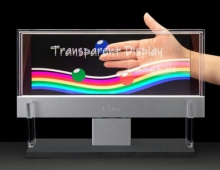
JDI Develops Transparent Glass-based Capacitive Fingerprint Sensor
Japan Display Inc. (JDI) has developed a transparent glass-based capacitive fingerprint sensor by applying the company's capacitive multi-touch technology used in its other liquid crystal displays (LCDs).
JDI plans to start commercial shipments within its 2018 fiscal year, which ends March of 2019.
JDI is striving to enter the sensor business market, and gain its new position in this non-display sector by leveraging its experience and know-how fostered through the development of low-temperature poly-silicon (LTPS) LCDs.
JDI's glass-based capacitive fingerprint sensor applies the basic touch functionality technology that is integrated in the company's in-cell Pixel Eyes displays which have been used in smartphone and digital still camera applications. With Pixel Eyes, the touch functionality is integrated into the glass substrate by detecting the changes in capacitance that occur when a finger touches the LCD surface. The glass substrate identifies the area touched by the finger through the detection of the changes in capacitance.

This technology has evolved within JDI to the extent that the company has succeeded in enhancing it to detect the changes in capacitance caused by the recesses and ridges of an individual's fingerprints. This further technological development made it possible to form JDI's new capacitive fingerprint sensor on a transparent glass substrate. JDI will expand the lineup to include larger or smaller sizes as well as this 8mm x 8mm sensor.
| Specifications | ||
| Sensor method | Glass-based Capacitive Fingerprint Sensor | |
|---|---|---|
| Effective sensor size | 8.0mm x 8.0mm (0.45-inch) | |
| Gradation | 256 | |
| Resolution | 160 x 160 | |
| Pixel density | 508dpi | |




















